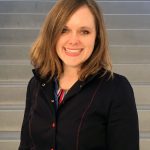“[Rulan Tangen] is on the cutting edge of dance and moment, but also in exploring indigeneity itself, bringing this together by emphasizing being a good human in the world.”
Intertribal dance ensemble Dancing Earth promotes indigenous sovereignty and cooperative resilience using dance as a language of change. Led by 2016 ABOG Fellow Rulan Tangen, each of the ensemble’s pieces includes community gatherings and collaborative visioning sessions that lead up to a public performance. The preliminary work emphasizes communication and authenticity, and is just as crucial to the work as the culminating performance. The deep impact that participants shared in collaborating with Dancing Earth is tangible in their enthusiastic devotion to the experience.
seeds: ReGeneration was the culmination of an in-depth, four-year collaboration with native leaders and community members across the rural Four Corners region. The premiere in Durango, Colorado in fall 2016 brought together community members, professional dancers, educators, and anyone else interested in the underlying themes of the project to create a cooperative dance piece. Here, five participants share their perspectives and experiences with ABOG.
For a first-hand experience of seeds: ReGeneration, read Joelle Te Paske’s dispatch from her visit to Durango.
Core Dancing Earth Artist & Farmer: Lupita Salazar
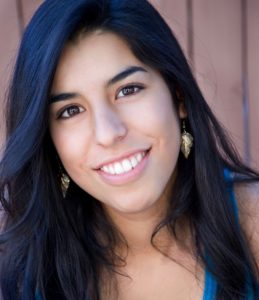 Lupita Salazar is a farmer and performing artist from the mountains of northern New Mexico. She has returned to her home to help manage her family’s ranch, and is working as an Agricultural Programs Director with the Northern Youth Project, as well as teaching theater with Moving Arts Española, and as a performer with Dancing Earth. At present she is working to find balance between working the land and telling the stories that need to be heard.
Lupita Salazar is a farmer and performing artist from the mountains of northern New Mexico. She has returned to her home to help manage her family’s ranch, and is working as an Agricultural Programs Director with the Northern Youth Project, as well as teaching theater with Moving Arts Española, and as a performer with Dancing Earth. At present she is working to find balance between working the land and telling the stories that need to be heard.
Johanna Taylor (ABOG): What encouraged you to participate in the project?
LS: I have been participating in Dancing Earth’s summer intensives for a while and eventually began to help organize them. What I found really interesting as we came together from different cultures and from parts of the world is that we all unite around food. In my family food is important and eating together is a sacred rite. We were doing work around water that eventually moved towards food sovereignty and regenerating the earth productively. All the things that I was trying to do with my own life through studying indigenous agriculture for my master’s degree. I also had recently moved back to my family’s ranch to set down roots and build a healthier community from the ground up.
This project is right up my alley. As we came together to create the piece each one of us were able to contribute meaningfully to the stories told because we are not only dancers but we are also connected to the traditions of our communities and are living these traditions. We are cultural carriers not because we have this knowledge, but because we put it into practice in our daily lives.
The elders that we worked with were our superheroes. We learned so much from them and being able to dance their stories into life was an honor. Especially in the scenes where I danced the farmers’ stories, I felt like I was embodying multiple generations of famers by weaving in and out of time to tell the audience about the importance of connecting with the land and the food you eat, and to not take the work of our ancestors for granted.
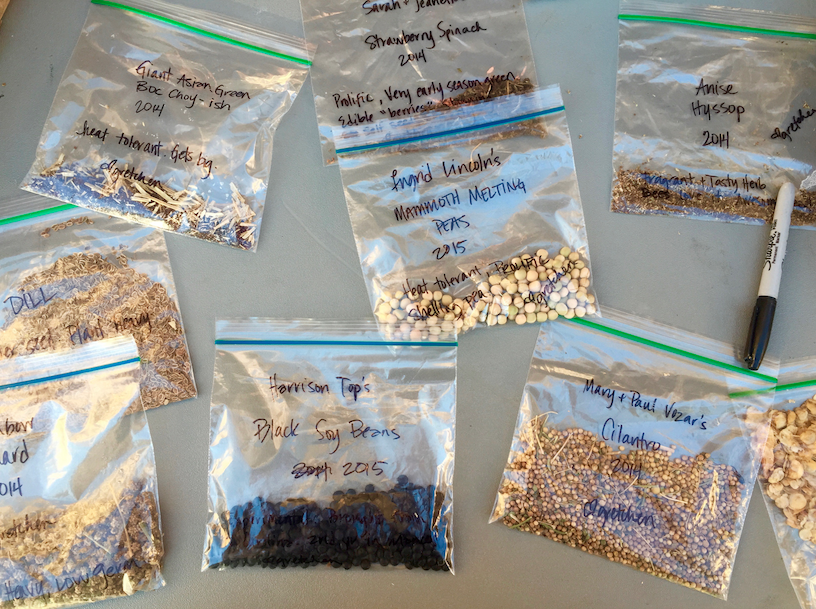
Seed exchange table at performance of seeds: ReGeneration, Durango, CO, September 2016. Photo: Joelle Te Paske
ABOG: What has been meaningful or impactful about the project, whether to you individually or the community as a whole?
LS: I have experienced great personal growth. Farming is not the easiest job in the world and it’s also not the most glamorous. I think dance keeps me positive because we are dancing [for] a positive future, a future we want to see. I am able to self-reflect and bring the beauty of what I do to the stage. When I return to my garden I see beauty in the dance of nature as well. It has created a balance for me: to live my life and then to bring the beauty of it to others; to inspire others in a way that talking cannot.
We performed for a group of elders at the Grand Canyon Trust’s indigenous elders event this November. The reactions after our dance were beyond words. I felt as if they had gone through the story with us. It was their story, it is our story. We “got” what they had gone through and were pushing forward. We had inspired them as they had inspired us.
Our tour of reservation communities in New Mexico and Arizona was another experience in which our audience “got it.” Elders and youth alike understood what we were trying to say and were moved beyond words. We were able to do workshops with the youth beforehand, which allowed us to discuss our work with them and also to get to know them. They could see themselves as farmers, as community workers, as teachers…just like us. Reaching people who may otherwise never see this performance was an honor.
Cultural Advisor & Native Community Member: Randle Charles
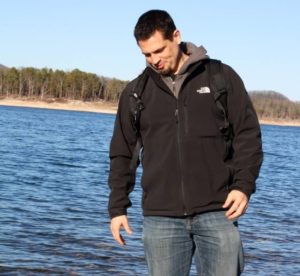
Randle Charles, Oneida from Six Nations and Oneida of the Thames, is both an artist and an inspiring facilitator. Working in many indigenous communities throughout North America has inspired his courageous quest towards decolonization and cultural preservation, a passion that has inspired both his creative work and facilitation. As an artist, guided by his passion for the Iroquois culture and traditions, he has taken contemporary Native American art to an international level. As a facilitator, Randle has been leading transformative experiences for groups and individuals in professional and wilderness settings for over 20 years. Randle’s approach arises from his unique pursuit of the arts, the creative mindset they provide, and his experience guiding individuals to successfully meet their individual goals, build mental flexibility, and develop resiliency. Regardless of the medium, Randle is striving to increase awareness, preserve, and continue in the path of his ancestors on his own journey, and hold space for others at pivotal moments along their paths.
ABOG: What encouraged you to participate in the project?
RC: I work with native communities at the Academy for the Love of Learning. I have long been a huge fan of Rulan’s work, and have always been intrigued and personally empowered by the way that she approaches working with native people and non-native people alike. One of the things that is so powerful about her work is the community building that she creates by inviting people to recognize their own indigeneity, empowering them to step into it whether they identify as Native American or indigenous or not. She respects culture and respects teaching, bringing these perspectives together to help people align with different ideas of indigeneity. She is on the cutting edge of dance and moment, but also in exploring indigeneity itself, bringing this together by emphasizing being a good human in the world.
I always take advantage of seeing Dancing Earth perform and slowly have gotten to know Rulan personally. I first went to a show of their new project in Durango and then was invited to sit with community members in a related workshop. We were encouraged to speak whatever came to us. In that exploration Rulan provided seeds of inspiration to get people to think about how they live and are in the world. Not only did I communicate my own experience, but I also sat with elders and other people sharing aspects of their own cultures. Just to hear their stories was empowering.

Inviting community members to participate in opening ceremony of seeds: ReGeneration. Photo: Joelle Te Paske
ABOG: What has been meaningful or impactful about the project, whether to you individually or the community as a whole?
RC: I don’t see myself as a dancer, but since my voice was a part of the performance I felt more connected to the work. Hearing the other voices that I had first listened to in the circle workshop become a part of the music and dancing was magical. One of the dancers told me “we have been working off your words for months now.” It was so inspiring to see how they interpreted personal experiences shared in language into their movement.
In my own work I try to cross bridges and communicate with people outside of the culture. Participating in the project helped me in my own life and my own work supporting native communities at the Academy for the Love of Learning. It empowered me to keep going, to keep doing the work I do in the world.
Dancing Earth’s evening performances are at a set time, but before every formal performance the work has already been presented at a school with local kids or in another community space. For me that is much more powerful because it gives access to communities. That access is something Rulan is aware of as she actively connects people who may not otherwise know that a performance is happening or that it includes community participation. Access is a foundational part of her pedagogy and approach, it is powerful.
Artist & Activist: Marion Claire Wasserman

Educated in Philosophy and Eastern Religion, Marion Claire Wasserman explores themes of prana, consciousness, transformation, and archetypes in her work. Influenced by her years as a painter, she layers images and timelines into visual stories. Incorporating video into a sculptural installation has led Wasserman to create stories contained in a new context or new realm. Wasserman is a multi-disciplined artist living and working in Santa Fe, New Mexico. She recently received an MFA from the Transart Institute, Plymouth University, 2015.
ABOG: What encouraged you to participate in the project?
MCW: Rulan Tangen and I have collaborated over the years because of a shared vision and passion for the earth, the creative process, and a deep trust. The ReGeneration project began with recording a weekend spent at Ghost Ranch with the Grand Canyon Trust gathering of elders and activists working to conceive and develop Rulan’s choreography and intention. I suggested that we record audio throughout the weekend culling the truth and essence of what was shared through sound. The genuine communal, vulnerable sharing of struggles, of heart, and mythos was also recorded and became the text to accompany the movement and the entire creative process. Filming with a drone at Ghost Ranch just weeks after that, we made a video to incorporate into the performance that were able to return to the land with a sense of direction and connection from what had been shared inter-generationally and inter-culturally; a collective script emerged.
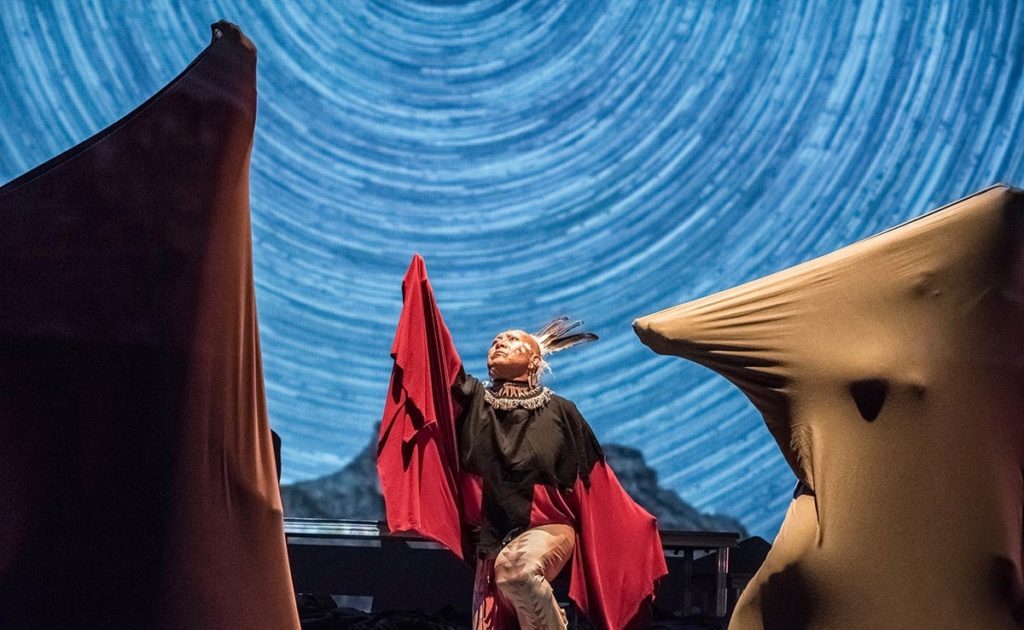
Havasupai Elder James Uqualla performing in seeds: ReGeneration. Photo: © Paulo T Photo for Dancing Earth
ABOG: What has been meaningful or impactful about the project, whether to you individually or the community as a whole?
MCW: So much has impacted me and my work. It gives me great affirmation that collectively we have an incredible power to flesh out truth and rise up to meet the drastic environmental challenges of our time. There were over 40 hours of audio collected and different people within the Dancing Earth company took the time to listen to and edit and mix that sound into a soundtrack giving power back to the original voices that so often are unheard. Dancing Earth’s approach is comprehensive, touching so many in the process – inviting their story to be told and giving that form and grace and actualization. It is so much more than the performance – its a process, a communion and an empowerment to the community, to the dancers, to the elders, to the students, to the farmers, to the elements, and to the site. Listening, offering and ritual – commitment, accountability, sustainability and faith are the underlying principles of Dancing Earth. It is a blessing to be participating in this circle.
Art-ivist & Native Community Member: Venaya Yazzie
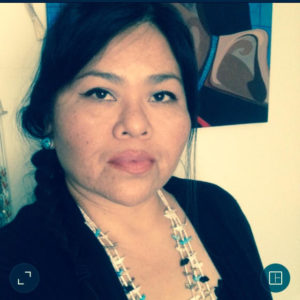
Venaya Yazzie is a Diné/Hopi multi-media artist from the eastern region of Navajoland in New Mexico. She is an alumnus of the Institute of American Indian and Alaska Native Arts in Santa Fe, NM and received a B.A. degree in English at Fort Lewis College, in Durango, CO and an M.A. in the University of New Mexico M.A. Teacher Education program with emphasis in American Indian Education. Venaya currently dwells in communities of the San Juan Valley in northwestern New Mexico, USA.
ABOG: What encouraged you to participate in the project?
VY: As an Indigenous multi-media artist and a resident of the San Juan Valley in northwest New Mexico, I was very much impacted by the 2015 Gold King Mine River contamination. Therefore, I was very moved to share my point of view in this project. I was fortunate to cross paths with Rulan when she was planning for her production and related art projects in the Durango area. I believe everything happens for a reason so I listened and made my decision to share as a participant in the project. I really wanted to push the agenda of ‘healing’ to this project and I wanted to create an art project that would be able to bring people together with one mind.
Though the river contamination primarily made a physically dangerous impact, it also made a traumatic and emotional impact to the community. For the Dine’ people, the impact was connected also the spiritual well-being of the tribe. I really felt as though creating a public art project would be a good way of expression and mental healing via the mandala art project I made.

Community mandala at seeds: ReGeneration. Photo: Joelle Te Paske
ABOG: What has been meaningful or impactful about the project, whether to you individually or the community as a whole?
VY: The most wonderful aspect of the project was the way in which we all linked the element of ‘water’ as a healing entity. The whole project, both the tangible and the intangible aspects of it, came together to make an impact on the participants and the public in a positive way. The message was that water is the most important resource that humans need to live a full, happy life.
Educator and Social/Environmental Justice Advocate: Jennifer Turner
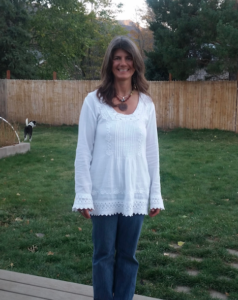
Jennifer Turner is a Colorado native and has lived in Durango the past five years. She is a passionate advocate for youth, social justice, and community and believes the three are fundamentally connected. Jennifer works at La Plata Youth Services, where she directs a continuum of community-based services that supports youth with significant challenges at home and in school. Through this work, she coordinates the SMART collaborative, a community-based, wrap-around response for at-risk students, comprised of more than 15 youth-serving agencies. Jennifer also founded and directs the Community-in-Schools Partnership Program, bringing community resources to schools, and the Radical Possibilities Therapeutic Mentorship Program, partnering college interns with youth who have experienced substantial adverse life events. Jennifer’s work with SMART was recognized in 2013-14 by United Way with a Community Leadership Award, and in 2015 as a Finalist for the Colorado Collaboration Award, being one of four non-profit collaborations in the state to receive this honor. In addition to her professional role advocating for youth, Jennifer is also a mother of two boys, 12 and 17. Their experiences and insights constantly inspire her in the work she does for her community.
ABOG: What encouraged you to participate in the project?
JT: I am a community member who has had the honor of participating on stage in Dancing Earth’s recent production in Durango. I first went to a performance when Dancing Earth was in town a few years ago and later participated in a community dance workshop that Rulan was leading. I was so inspired and touched. When this opportunity came I jumped on it.
What Dancing Earth is doing happens on a deep, profound level. It is more than just an “artist in residency” or about “collaborating with community”…it is difficult to translate into words. It is not a word based art form, and it is not completely an art form. It is about the intention of how we are together as human beings. I believe that dance is our birthright as much as right to eat and drink. Dance is an amazing spirit that helps connect us to our humanity.
As humanity, this is an important way in which we are able to express and connect and heal and communicate. I think that there is brilliance in the energy that Rulan embraces. This performance allows it all to exist. It is community, prayer, learning, educational. Rulan has really has captured that space with dance. She allows us to connect both with those performing the dance and those observing the performance.
This performance truly embodies what we mean when we say diversity and celebrating diversity. We need to truly celebrate these different expressions to realize how crucial they are for our survival. As Rulan choreographed our community group, she would ask us for our movement, see it, get excited about it, and celebrate. It is not just about allowing different perspectives but rather celebrating those perspectives. We need them. In dancing they become incorporated into the whole. It is authentic in the movement being offered, each piece comes together to make the whole even more beautiful.
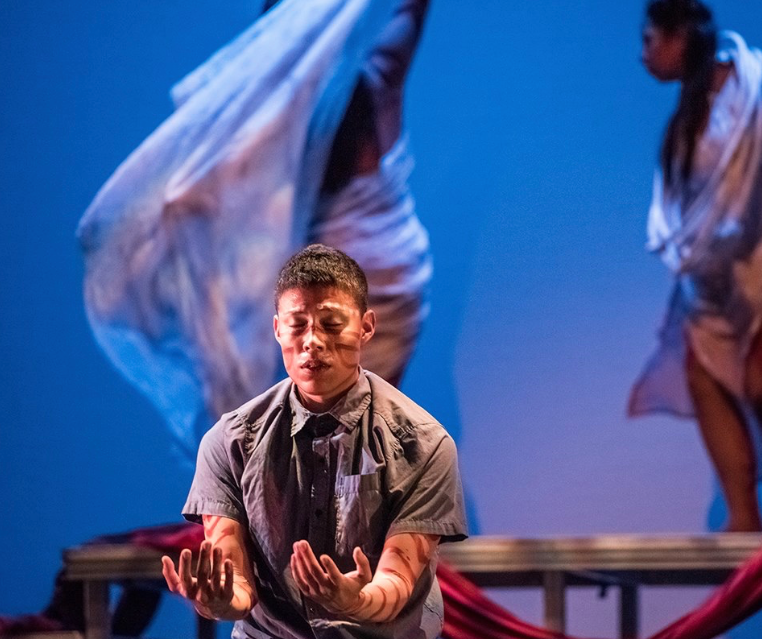
Dancing Earth company member performing in seeds: ReGeneration. Photo: © Paulo T Photo for Dancing Earth
ABOG: What has been meaningful or impactful about the project, whether to you individually or the community as a whole?
JT: Rulan created space for me personally to really know and love that part of myself. I think she has a vision that is really important, and it allows people to show up as exactly who they are. I am sure that watching her do that for so many different people, and the whole group is an embodiment of love and kindness. Rulan and Dancing Earth embody loving you for who you are, and being in a community that is going to welcome everybody as they are.
In mainstream culture we promote values of individualism. But in reality, I believe in humans as being communal. We are much better when we work together. One of the challenges is that as a community we have a lot of inspired individuals, which doesn’t go as far as having an inspired tribe. This performance makes clear that this void exists in our global communities. It is such a powerful and important thing.
____________
Follow A Blade of Grass on Facebook, Twitter, and Instagram.
